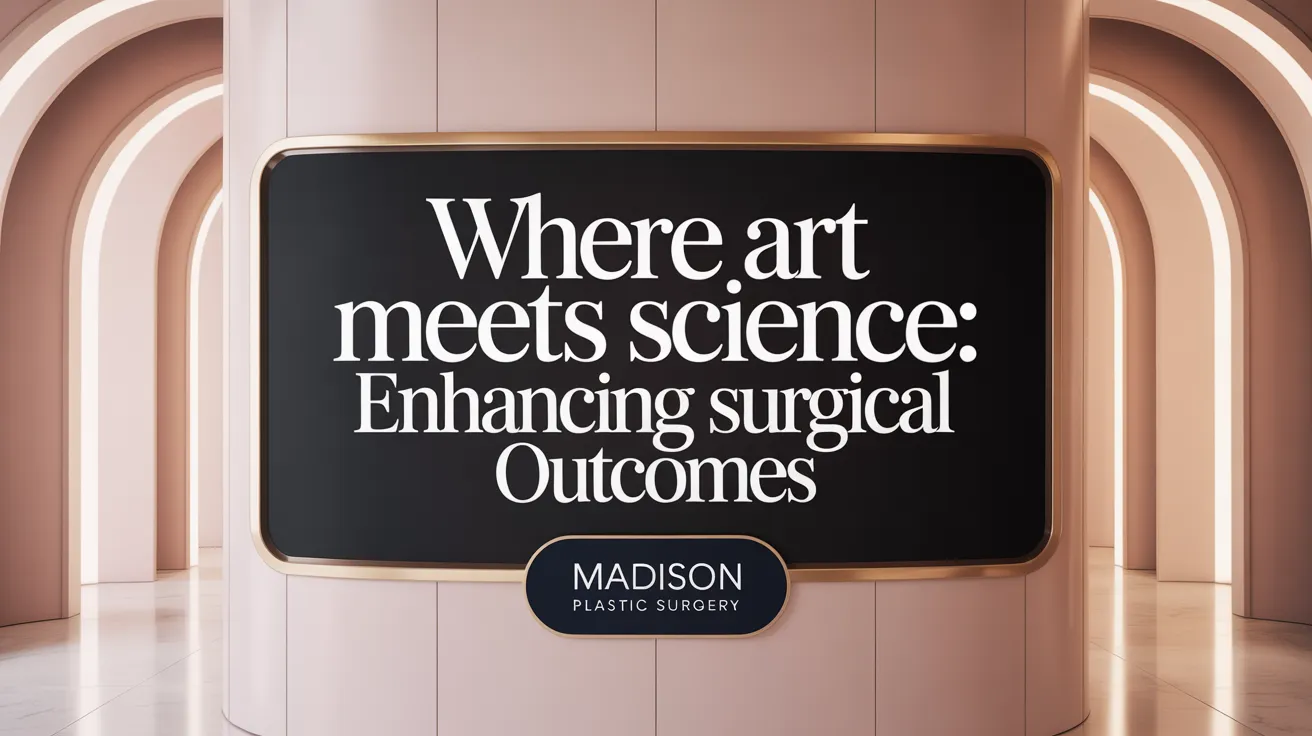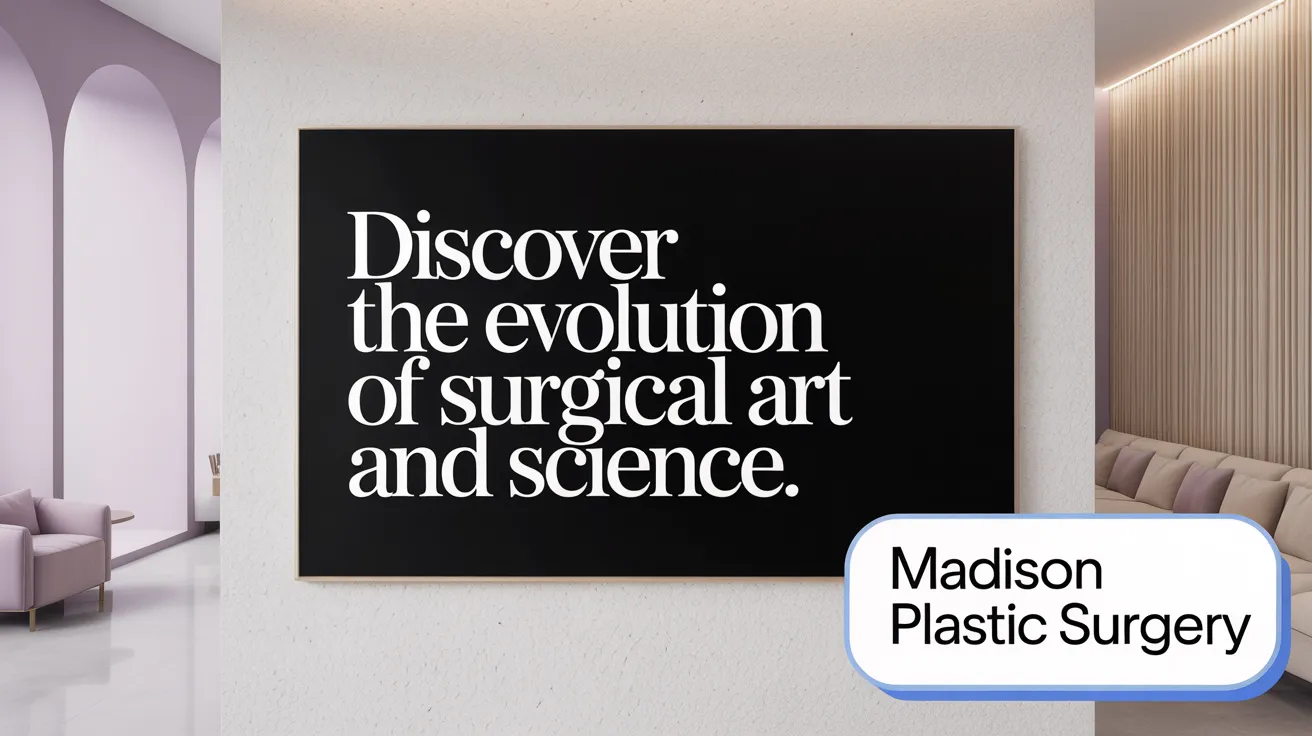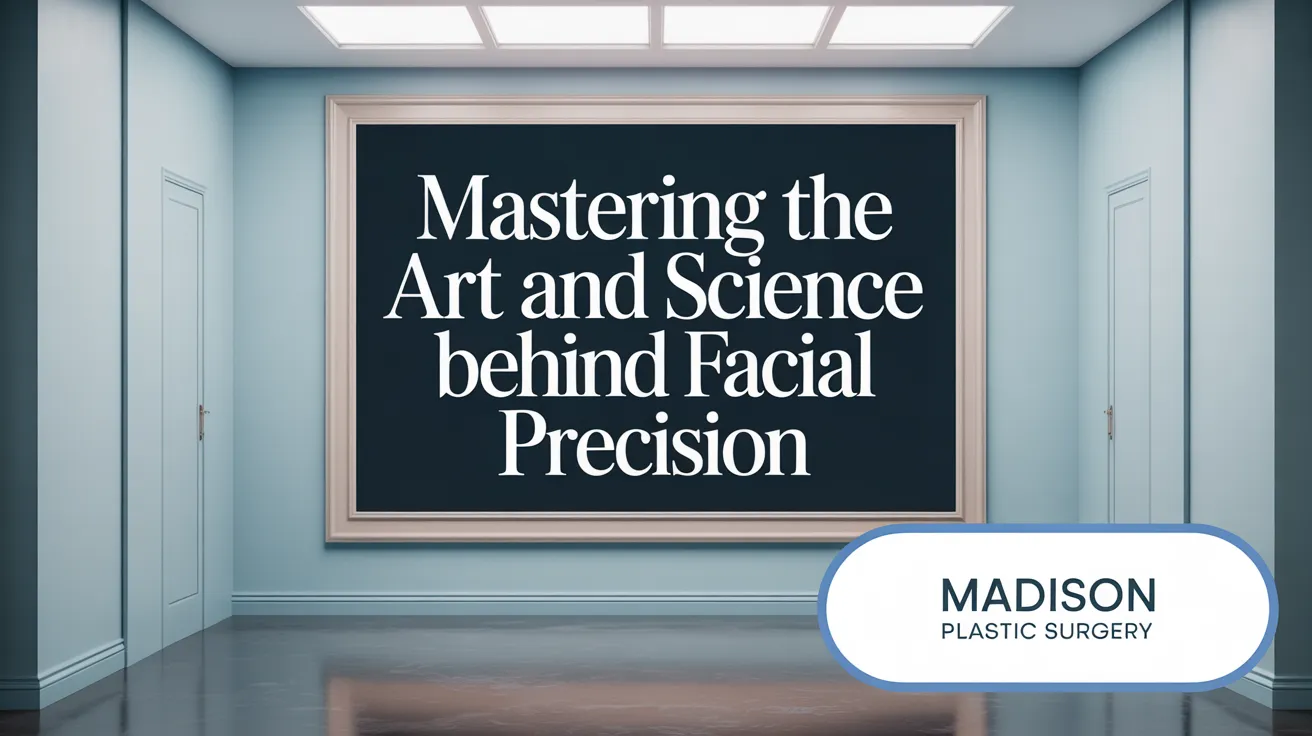Blending Creativity With Medical Expertise
Plastic surgery stands as a unique medical discipline where the artistry of form meets the rigor of science. This specialized field demands not only advanced scientific knowledge but also an artistic sensibility that enables surgeons to transform and enhance human appearance with exceptional precision. From ancient skin grafting practices to modern robotic-assisted procedures, the journey of plastic surgery illustrates a continuous evolution in intertwining art and science to achieve superior aesthetic outcomes. This article explores the core principles, historical development, philosophical underpinnings, and the dynamic relationship between artistic vision and scientific techniques that drive precision in plastic surgery.
Fundamental Principles and Techniques Ensuring Precision in Plastic Surgery

What are the fundamental principles and techniques that ensure precision in plastic surgery?
Achieving precision in plastic surgery relies on a blend of scientific expertise and artistic finesse. The cornerstone is meticulous surgical technique, where every movement and decision must be carefully calibrated. Surgeons emphasize thorough preoperative planning, including detailed patient evaluations and precise markings to guide incisions and corrections.
Understanding and handling tissues delicately is essential. This involves careful dissection, thoughtful incision placement, and gentle tissue manipulation to minimize trauma and irregularities. Accurate suturing, often using tension-free methods, ensures optimal healing and minimal scarring, which is vital for both appearance and function.
Intraoperative controls such as making incisions with the skin stretched, applying the scalpel perpendicular to the surface, and ensuring proper alignment of tissues help in achieving consistency. These techniques help in mimicking natural facial harmony and proportionality.
Postoperative care plays a crucial role. Proper immobilization, edema management, and pain control support healing and help maintain the surgical results. Regular follow-up allows surgeons to address any issues promptly, ensuring that the final outcomes meet both aesthetic standards and patient expectations.
Together, these principles—meticulous planning, precise technique, anatomical knowledge, and diligent postoperative care—form the foundation of accuracy and excellence in plastic surgery. They enable surgeons to deliver results that are not only visually pleasing but also functionally sound.
The Symbiotic Relationship Between Artistic Skills and Scientific Knowledge

What are the roles of artistry in plastic surgery?
Artistry plays a vital role in plastic surgery by allowing surgeons to create natural and harmonious results. Surgeons act as artists, employing their sense of aesthetics to assess facial proportions, balance, and symmetry. They consider individual patient features to craft personalized outcomes that enhance beauty without appearing artificial. This artistic sensibility guides decisions on incision placement, tissue repositioning, and overall facial harmony.
What is the scientific foundation of surgical procedures?
The scientific aspect of plastic surgery is grounded in a thorough understanding of human anatomy, physiology, and pathology. Surgeons rely on scientific principles to ensure procedures are safe and effective. Precise knowledge of facial structures, vascular systems, and nerve pathways helps minimize risks, preserve function, and optimize healing. Advances in imaging technologies, microsurgery, and tissue engineering further reinforce the scientific backbone of the field.
How does the integration of visualization and creativity impact outcomes?
Visualization is crucial for planning and executing procedures. Surgeons mentally rehearse surgeries, imagining the final results while considering the patient’s unique features. Creativity enables adaptation of techniques to meet individual needs, while visualization ensures precision. The combination allows for subtle enhancements that maintain natural appearance and maximize aesthetic appeal.
What is the impact on patient-tailored aesthetic outcomes?
Merging art and science results in treatments tailored to each patient’s goals and anatomy. Surgeons consider personal preferences, facial proportions, and age-related changes to craft customized plans. This approach leads to higher patient satisfaction, improved self-esteem, and results that align with timeless aesthetic principles.
How do plastic surgeons balance safety with artistic design?
Safety remains paramount in all procedures. Surgeons incorporate thorough preoperative assessment, sterile techniques, and careful planning to minimize risks. Simultaneously, their artistic eye guides subtle corrections that respect individual beauty and natural contours. This balance ensures successful, safe, and aesthetically pleasing results.
| Aspect | Artistic Element | Scientific Element | Combined Focus |
|---|---|---|---|
| Planning | Artistic sense of proportion and harmony | Anatomical accuracy, imaging, measurements | Precise, personalized approach |
| Technique | Creativity in approach, incision placement | Microsurgical precision, tissue handling | Natural results with minimal scarring |
| Postoperative care | Empathy and understanding patient concerns | Evidence-based healing protocols | Patient satisfaction and safety |
| Outcomes | Aesthetic harmony, timeless beauty | Functional preservation, safety standards | Long-lasting, natural-looking results |
This synergy of art and science forms the foundation of successful plastic surgery, enabling surgeons to deliver personalized, safe, and aesthetically harmonious results that enhance patient well-being.
Historical Evolution: Merging Artistic Vision and Scientific Progress in Surgery

What is the historical development of the balance between the art and science in achieving surgical accuracy?
The origins of plastic surgery date back over 4,000 years, with ancient Indian surgeon Sushruta performing some of the earliest skin grafts and nasal repairs around 600 BC. His innovative techniques laid the groundwork for integrating practical surgical methods with an understanding of anatomy, emphasizing both function and form.
During the Renaissance, a period marked by a renewed interest in art and science, surgeons and artists collaborated intensively. Leonardo da Vinci's detailed anatomical drawings and explorations of proportion, perspective, and light significantly influenced surgical practices. His meticulous studies of facial features and skull structures helped surgeons better understand the intricacies of facial harmony, blending artistic sensibility with scientific precision.
The development of anesthesia in the 19th century and antiseptic techniques improved safety dramatically, allowing surgeons to perform complex procedures with increased confidence and accuracy. These advances made it possible to focus on aesthetic refinement, balancing artistic goals with scientific standards.
Medical illustrations and detailed anatomical models emerged from collaborations between artists and scientists, enhancing surgical training and precision. These visual tools helped surgeons visualize and plan procedures more accurately, fostering an environment where artistic insight and scientific knowledge reinforced each other.
In recent decades, technology has propelled the field forward. Innovations such as robotic-assisted surgery, advanced imaging technologies, and 3D printing have enhanced surgical accuracy and personalization. These advancements continue to build on the historical foundation, exemplifying the seamless integration of art and science that defines modern plastic surgery.
| Era | Contributions | Significance |
|---|---|---|
| Ancient India (600 BC) | Skin grafts, nasal reconstructions | Established early practical link between surgical skill and aesthetics |
| Renaissance | Anatomical drawings, proportion studies | Deepened understanding of facial harmony and anatomy |
| 19th Century | Anesthesia, antiseptics | Enabled complex, safer procedures |
| Modern Times | Imaging, 3D printing, robotic surgery | Heightened precision, customization, and minimally invasive techniques |
Understanding this historical journey highlights how the balance between artistic vision and scientific progress has been essential in advancing the accuracy, safety, and aesthetic excellence of plastic surgery. It underscores that the field’s evolution is rooted in an ongoing dialogue between creative artistry and technological innovation.
Philosophy, Craftsmanship, and Expertise in Facial Plastic Surgery Precision

What philosophies, craftsmanship, and expertise are essential to achieve precision in facial plastic surgery?
Achieving exceptional accuracy in facial plastic surgery begins with a guiding philosophy centered on personalized care. Surgeons prioritize understanding each patient's unique facial features, desires, and psychological needs to craft subtle, natural-looking enhancements. This approach ensures that outcomes are harmonious with individual identity and aesthetic harmony.
Expertise is equally vital. Mastery of facial anatomy, including bone structures, soft tissues, nerves, and blood vessels, forms the foundation. Surgeons must also grasp the nuances of facial proportions, aging patterns, and tissue behavior to plan effective procedures. Knowledge of these factors allows for precise adjustments that enhance symmetry and balance without overcorrecting.
Advanced technological tools have become indispensable. Digital imaging, 3D modeling, and artificial intelligence assist surgeons in visualizing potential outcomes, refining surgical plans, and customizing interventions specifically to each face. These innovations allow for meticulous planning and increase surgical accuracy.
Craftsmanship, the artistic element, involves using surgical skill to refine and enhance facial features subtly. It emphasizes the importance of achieving results that look natural and enduring. Surgeons meticulously calibrate their techniques, paying close attention to proportions, angles, and soft tissue handling to preserve facial harmony.
A comprehensive, empathetic consultation rounds out this approach. Engaging in honest dialogue helps align expectations and educates patients about achievable results, emphasizing trust and understanding. Effective communication also ensures that psychological and emotional factors are considered, enhancing overall satisfaction.
In summary, the essence of precise facial plastic surgery lies in a blend of thoughtful philosophy, meticulous craftsmanship, and expert knowledge. Combining these elements with cutting-edge technology supports safe, effective, and elegant transformations that respect each individual’s unique beauty.
Bridging Artistic Principles and Scientific Methods to Elevate Surgical Precision

How can plastic surgeons combine artistic principles with scientific methods to enhance surgical precision?
Plastic surgeons seamlessly blend artistic concepts, such as balance, symmetry, and proportion, with cutting-edge scientific tools and techniques. Artistic sensibility allows surgeons to envision aesthetic harmony tailored to each individual, emphasizing natural-looking results.
Incorporating scientific advancements like high-resolution imaging technologies enables precise mapping of facial and body features before surgery. Biomaterials and tissue engineering contribute to improved tissue compatibility and healing.
Preoperative planning often involves digital 3D imaging, which helps visualize outcomes, ensuring that aesthetic goals align with anatomical realities. During surgery, microsurgical skills and meticulous measurements ensure that tissue handling preserves function and minimizes scarring.
Understanding facial anatomy through scientific study informs the artistic pursuit of harmony. Techniques such as laser refinement and minimally invasive approaches further enhance precision and reduce recovery time.
Historical insights from ancient traditions, alongside modern research, highlight consistency in valuing balance and proportion. Classical teachings like Leonardo da Vinci’s principles of the Golden Ratio remain relevant in planning procedures that require both aesthetic judgment and rigorous scientific application.
Educational programs now incorporate visual thinking, anatomy, and evidence-based practices, fostering a comprehensive skill set in upcoming surgeons. This approach cultivates surgeons' ability to adapt artistic intuition with scientific evidence.
By integrating these elements, practitioners deliver personalized, safe, and innovative treatments. The synergy results in outcomes that are aesthetically pleasing, functional, and tailored to individual patient needs.
| Artistic Concepts | Scientific Tools and Methods | Goals and Outcomes |
|---|---|---|
| Balance, symmetry, proportion | Advanced imaging, 3D modeling | Natural, harmonious results |
| Facial harmony and aesthetic judgment | Microsurgery, biomaterials | Personalized treatment plans |
| Artistic vision and creative adaptation | Evidence-based protocols, laser technologies | Minimal scarring, quick recovery |
This holistic integration ensures that the art of beauty is supported and refined by scientific precision, elevating the standards of modern plastic surgery.
Art Meets Science: Crafting Precision for Transformative Outcomes
The extraordinary precision seen in plastic surgery today is the result of an ongoing, dynamic fusion between artistic sensibility and scientific advancement. From ancient innovators to contemporary specialists, the field thrives on the harmonious balance of creativity, craftsmanship, and rigorous medical knowledge. Surgeons, as both artists and scientists, continuously refine techniques and embrace technologies that elevate patient care and aesthetic excellence. This blend ensures that every procedure is not merely a medical intervention but an individualized expression of beauty and function. As plastic surgery continues to evolve, its foundational commitment to combining art and science remains the cornerstone of achieving transformative, natural, and enduring results.
References
- Understanding the Art and Science of Plastic Surgery
- THE ART AND SCIENCE OF PLASTIC SURGERY
- Is plastic surgery an art or a science?
- Leonardo Da Vinci and facial plastic surgery - PMC
- Overlapping worlds of art and plastic surgery: developing a ...
- The Art And Science Of Facial Plastic Surgery
- The Art and Science of Plastic Surgery
- The Art and Science of Facial Plastic Surgery - David Butler MD
